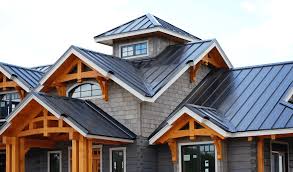When it comes to adding a canopy to your outdoor space, one of the most critical decisions you’ll make is choosing the right roofing material.
The canopy not only needs to look great but also stand up to the elements, providing shelter and comfort for years to come.
With various materials available, it can be challenging to decide which one best suits your needs.
This guide will walk you through some of the top roofing options for canopies, highlighting their benefits to help you make an informed decision.
Polycarbonate Sheets
Polycarbonate is a popular choice for canopy roofing, and for a good reason. This material is incredibly durable, resistant to impact, and lightweight, making it easy to handle and install.
One of the standout options within this category is the clear polycarbonate twinwall.
This type of polycarbonate sheet offers excellent insulation properties while still allowing natural light to pass through, creating a bright and welcoming space underneath your canopy.
Additionally, the twinwall design enhances its strength, making it a fantastic choice for areas prone to extreme weather conditions.
Glass Roofing
For a sleek and modern look, glass roofing is an excellent option. It provides a clear, unobstructed view of the sky while offering protection from rain and wind.
Glass roofs are often used in high-end residential projects due to their luxurious appearance.
However, glass can be more expensive and heavier than other materials, so it’s essential to ensure that your canopy structure can support its weight.
Furthermore, glass roofing requires regular maintenance to keep it looking pristine, which might be a consideration if you prefer a low-maintenance option.
Metal Roofing
Metal roofing is a robust and long-lasting option for canopies. Available in various metals like aluminium, steel, and copper, these roofs can withstand harsh weather conditions and provide excellent durability.
Aluminium is particularly favoured due to its resistance to corrosion, making it ideal for coastal areas. Metal roofs are also fire-resistant, adding an extra layer of safety to your outdoor space.
However, one downside to metal roofing is that it can be noisy during heavy rain unless adequately insulated.
Fabric Canopy Roofing
If you prefer something more versatile and less permanent, fabric canopy roofs might be the perfect choice.
These roofs are made from materials like canvas, acrylic, or polyester, which are treated to be water-resistant and UV-protected.
Fabric canopies offer a range of colours and designs, allowing you to customise the look of your outdoor space easily.
They are also relatively easy to install and can be retracted or removed when not in use, providing flexibility. However, fabric roofs may not last as long as more rigid materials and may require replacement after a few years of exposure to the elements.
Bitumen Roofing
For those looking for a budget-friendly option, bitumen roofing is worth considering. Bitumen, a byproduct of petroleum, is commonly used in roofing applications for its waterproofing properties.
It’s a durable and cost-effective choice, making it suitable for those who want a functional canopy without breaking the bank.
Bitumen roofs are easy to install, but they might not offer the same aesthetic appeal as other materials. Additionally, they can become brittle over time and may require periodic maintenance.
Conclusion
In conclusion, selecting the ideal roofing material for your canopy is a decision that requires careful consideration of your specific needs, budget, and aesthetic preferences.
Whichever option you go for offers unique benefits that can enhance your outdoor space.
